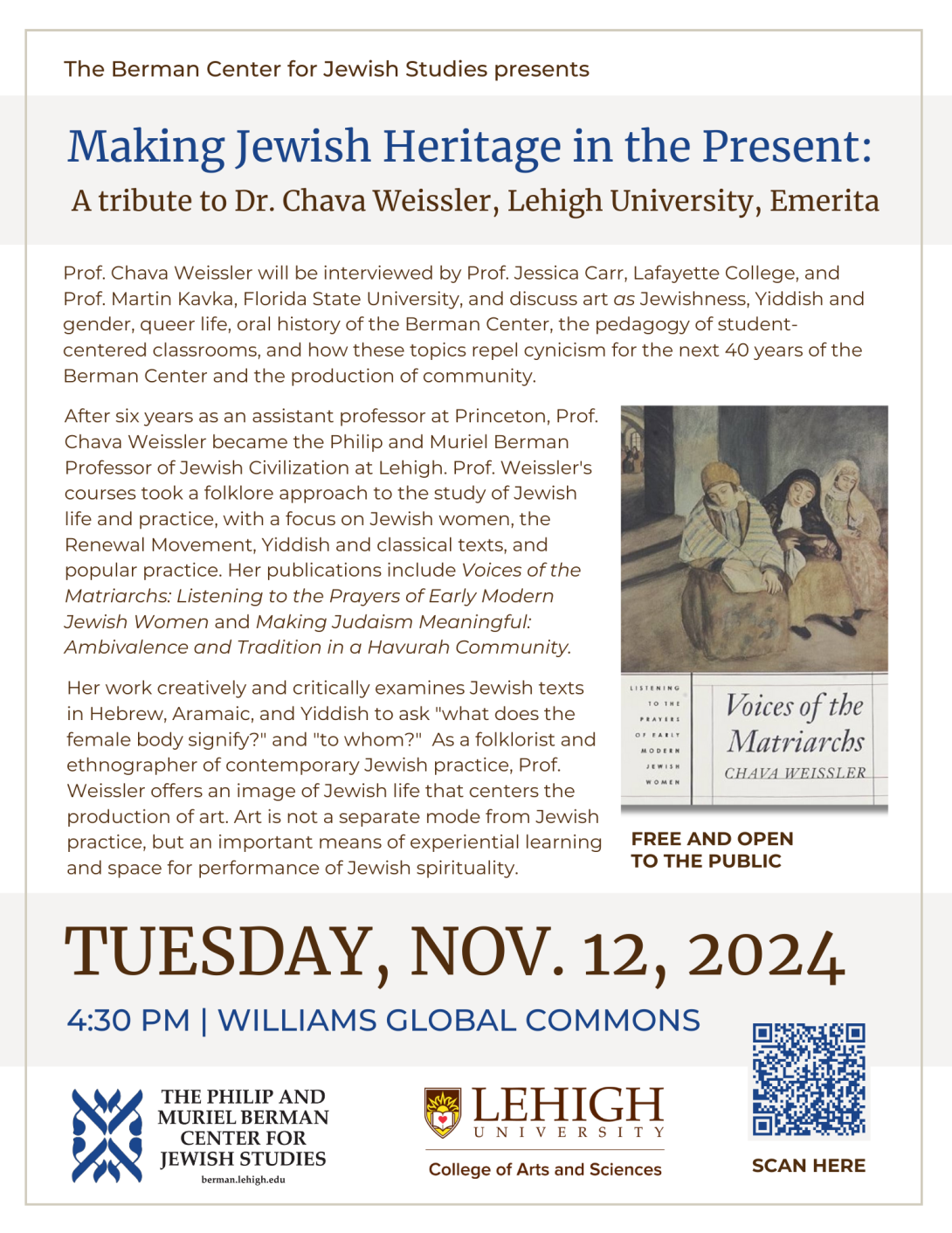Prof. Chava Weissler will be interviewed by Prof. Jessica Carr, the Berman Scholar of Jewish Studies at Lafayette College where they are an Associate Professor of Religious Studies, and Prof. Martin Kavka, a former Berman Professor who is a Full Professor at Florida State University, where he is also the chair of the Religion Department. This event will take the form of Q&A between Profs. Carr & Kavka with Prof. Weissler on art as Jewishness, Yiddish and gender, queer life, oral history of the Berman Center, the pedagogy of student-centered classrooms, and how these topics repel cynicism for the next 40 years of the Berman Center and the production of community.
After six years as an assistant professor at Princeton, Prof. Chava Weissler became the Philip and Muriel Berman Professor of Jewish Civilization. Prof. Weissler's courses took a folklore approach to the study of Jewish life and practice, with a focus on Jewish women, the Renewal Movement, Yiddish and classical texts, and popular practice. Her publications include Voices of the Matriarchs: Listening to the Prayers of Early Modern Jewish Women and Making Judaism Meaningful: Ambivalence and Tradition in a Havurah Community.
Her work creatively and critically examines Jewish texts in Hebrew, Aramaic, and Yiddish to ask "what does the female body signify?" and "to whom?" Her work illuminates ethical and devotional literature, reading between the lines to show how to find women in the Jewish past even when they are difficult to see. Moreover, Weissler's work reveals that ethical texts such as musar and devotional texts such as the Tseneurene and texts demonstrate the “multivocality of gender constructions” by replicating the multivocality of Jewish text verbally and visually.
As a folklorist and ethnographer of contemporary Jewish practice, Prof. Weissler offers an image of Jewish life that centers the production of art. Art is not a separate mode from Jewish practice, but an important means of experiential learning and space for performance of Jewish spirituality. She argues that Jews in the Renewal Movement consider art to be a method for biblical interpretation and midrash as well as a fulfillment of various commandments or mitzvot. She shows how scholars can take play seriously just as she shows that Jews take play seriously to respond to a variety of personal and communal ruptures, including the destruction of large-scale East European Jewish life.

